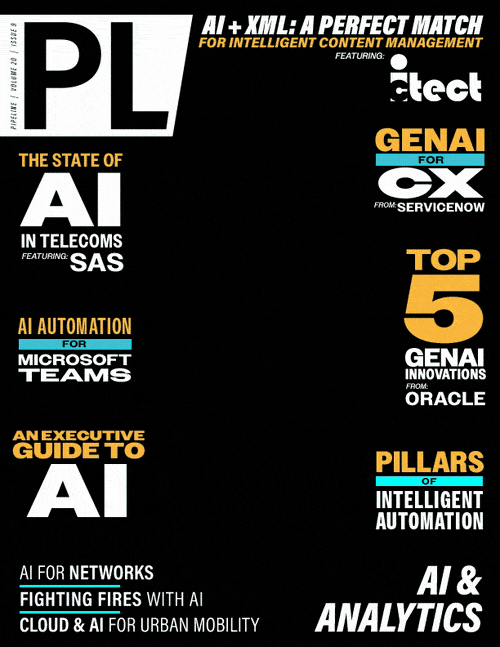Breaking Through the Noise: the True
State of AI in the Telecoms Industry

Artificial intelligence (AI) has rapidly become a focal point of innovation within the telecommunications industry, eclipsing even the much coveted 5G technology. The surge in AI’s relevance, particularly generative AI (GenAI), has led to widespread discussion and, at times, confusion regarding its role and capabilities.
One clear fact emerges: AI and GenAI are fundamentally reshaping the landscape of service assurance for communication service providers (CSPs). From network optimization and predictive maintenance to customer experience enhancement, AI technologies are being integrated into various strands of telecoms operations. In fact, the shift is so profound that AI’s role has become more prominent than 5G, which is a big technology leap in telecommunications.
Why AI?
The main reason for the surge of AI in telecoms is down to its ability to handle and analyze vast amounts of data, predict numerous outcomes, and automate processes that were previously manual and time-consuming. The result of this is a more efficient, responsive, and customer-centric service framework. However, understanding the distinctions between automation, AI, and GenAI is crucial for organizations to grasp their respective roles and potential in telecoms.
Automation involves using technology to perform tasks without human intervention. In telecoms, automation can streamline operations such as billing, network configuration, and routine customer service inquiries. While it can improve efficiency, it is typically limited to predefined tasks. AI, on the other hand, encompasses a broader spectrum of capabilities, including analyzing data, learning from it, and making decisions or predictions based on it. Machine learning (ML), a subset of AI, allows systems to improve their performance over time based on data patterns with applications in telecoms, including network optimization, fraud detection, and predictive maintenance. GenAI can create new content based on its training data and is mostly used in the telecoms sector to design new network infrastructures, develop personalized marketing campaigns, and generate insightful reports from unstructured data.
How Can AI be Used?
AI's application in telecoms spans a wide range of use cases, all of which contribute to the industry's evolution. Network optimization is one use case, where AI algorithms analyze traffic patterns and optimize network performance in real time, leading to improved service quality and reduced downtime. Machine learning models can predict network congestion and will proactively reroute traffic to maintain optimal performance. Predictive maintenance is another key application, where analyzing data from network equipment can identify potential failures before they occur, allowing CSPs to perform maintenance activities proactively, reducing the risk of unexpected outages and minimizing maintenance costs.
AI-driven customer experience management is also significant, with AI-driven chatbots and virtual assistants handling a substantial portion of customer inquiries, providing instant responses and solutions. Natural language processing (NLP) enables these systems to understand and respond to customer queries effectively, enhancing the overall experience.
AI can identify unusual patterns in data which may indicate fraudulent activity. Machine learning models continuously learn from new data, improving their ability to detect and prevent fraud over time, which is crucial for protecting both CSPs and their customers from financial losses. AI can also revolutionize personalized marketing. By understanding customer preferences and behaviors, CSPs can offer targeted promotions and services, increasing customer engagement and loyalty.
GenAI adds a whole new dimension to the telecoms industry by enabling the creation of content and solutions that were previously unimaginable. Its capabilities extend beyond traditional AI applications, offering innovative ways to address complex challenges. One notable application of GenAI in telecoms is network design, where it can simulate various network configurations and predict their performance, allowing CSPs to design more efficient and resilient networks. As a result, this significantly reduces the time and cost associated with network planning and deployment.
Leveraging its Full Potential
To fully harness the potential of AI and GenAI, CSPs must develop specific skills and competencies within their workforce with a multidisciplinary approach, combining technical expertise with
domain knowledge. Proficiency in data science and cloud analytics is crucial for developing and implementing AI models, which includes skills in data collection, processing, analysis, and
visualization. The importance of understanding statistical methods and machine learning algorithms is necessary for



















